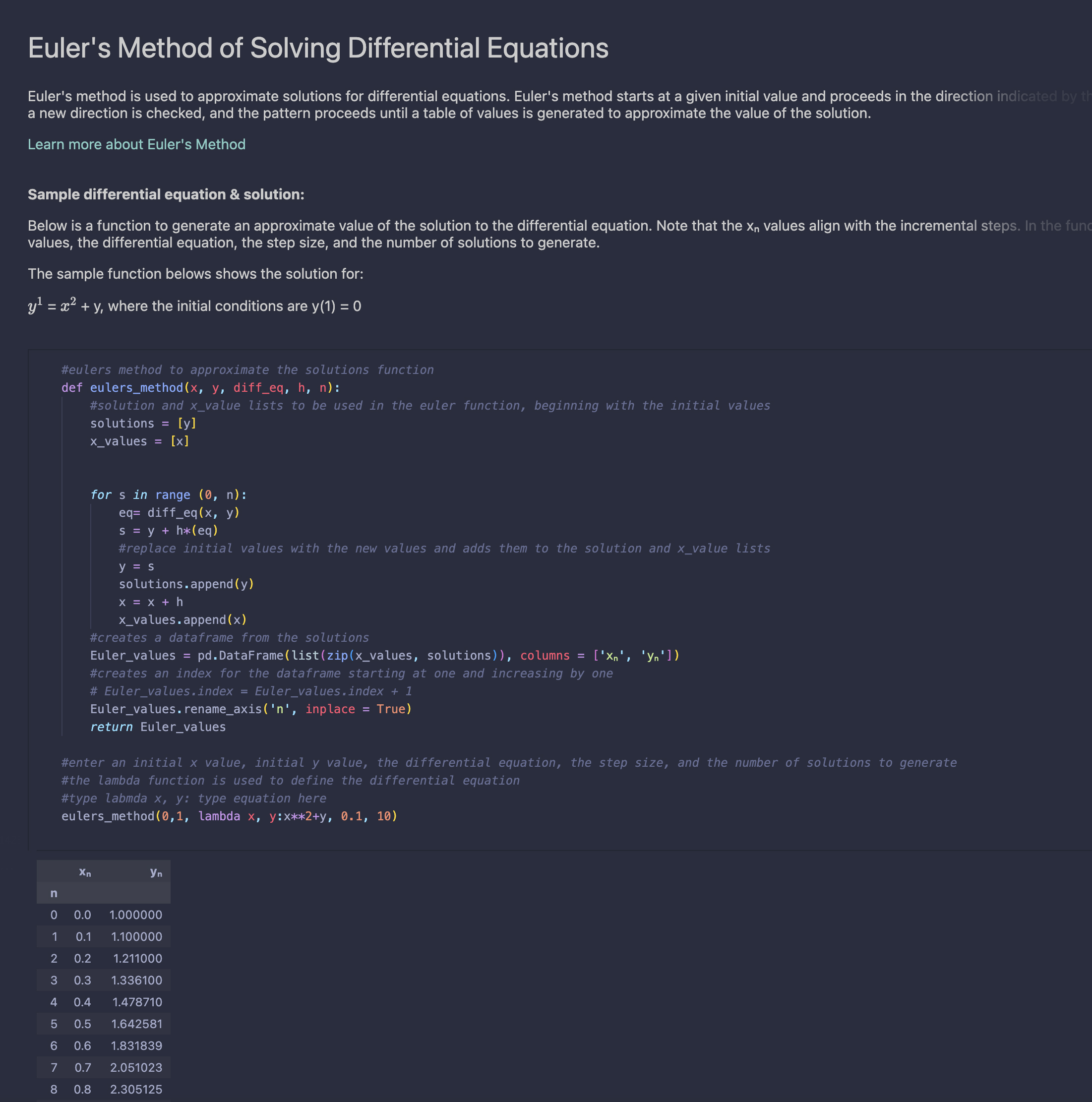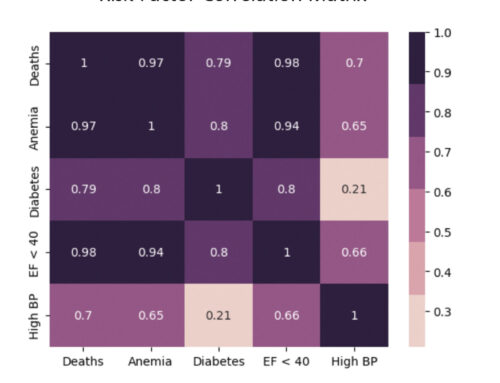When learning new subjects, I focus on how concepts can be applied to real-world situations. Analysts are required to complete mathematical analysis with code. To develop this skill, I created a Calculus Calculator to compute the tedious calculations inherent in Calculus II. The Jupyter Notebook includes mathematical functions for Euler’s method, Newton’s law of cooling, sequences, and series.
The final project is located in my GitHub repository and available for download. Other premade tools are also available, but I enjoyed the challenge of creating my own Calculus Calculator.
First-order differential equations
The first section of the Calculus Calculator contains a function to create an approximate solution for a first-order differential equation using Euler’s method.
Euler’s method is used to analyze circuit performance, determine reactivity in chemical reactions, understand bacterial growth, forecast financial systems, and more. When installing landscape lights, the instructions include tables that define the maximum distance to extend a wire before the furthest lights dim. These tables of values came from Euler’s theories.
An additional bonus section includes a function for Newton’s law of cooling.

Sequences & Series
Series and sequences represent mathematical equations that are impossible to express in traditional algebraic terms. Binary code, pi, and countless biological systems, such as DNA, are based on sequence.
Documentation
The Jupyter Notebook includes thorough documentation of each Python function and links to additional resources. Enjoy my application of Calculus II.






